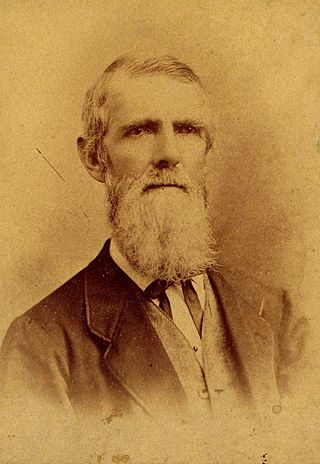Related Research Articles

Henry William Ravenel was an American planter and botanist. He studied fungi and cryptogams in South Carolina, discovering a large number of new species. The genus Ravenelia is named after him, along with many of the species he discovered.

Mordecai Cubitt Cooke was an English botanist and mycologist who was, at various points, a London schoolteacher, a Kew mycologist, curator at the India Museum, journalist and author,. Cooke was the elder brother of the art-education reformer Ebenezer Cooke (1837–1913) and father of the book illustrator and watercolour painter William Cubitt Cooke (1866–1951).
Macrometrula is a fungal genus in the family Psathyrellaceae. The genus is monotypic, containing the single species Macrometrula rubriceps, found growing in a greenhouse in the Kew Gardens, England. This species was originally named Agaricus rubriceps in 1887.

Gummivena is a fungal genus in the Mesophelliaceae family. The genus is monotypic, containing the single truffle-like species Gummivena potorooi, found in Western Australia. Described as new to science in 2002, Gummivena is intermediate in form between Castoreum and Gummiglobus, and has a gleba with "veins" of gummy tissue and a three-layered peridium. The specific epithet potorooi refers the fact that the fungus is found only in the range of the rare and endangered species Gilbert's potoroo.
Nothocastoreum is a fungal genus in the Mesophelliaceae family. The genus is monotypic, containing the single truffle-like species Nothocastoreum cretaceum, found in Australia.

Geastrum subiculosum is an inedible species of fungus belonging to the genus Geastrum, or earthstar fungi. The fungus was first described scientifically by Cooke and Massee in 1887, based on material found near Trinity Bay, Australia. The fungus grows on decaying wood, and the fruit bodies are characterized by an extensive velvet-like subiculum. The spores are roughly spherical and measure 3.6–4.2 μm. The species is found in Australia, Africa, North America, and South America.

Amanita ochrophylla is a fungus of the family Amanitaceae native to southeastern Australia. Its large and distinctive buff fruit bodies are common after rainfall.

Amanita ananiceps is a species of agaric fungus in the family Amanitaceae native to Australia.
References
- ↑ Cooke MCC. (1887). "Some Australian fungi". Grevillea. 15 (76): 97–101.
- ↑ Kirk PM, Cannon PF, Minter DW, Stalpers JA (2008). Dictionary of the Fungi (10th ed.). Wallingford, UK: CABI. p. 120. ISBN 978-0-85199-826-8.